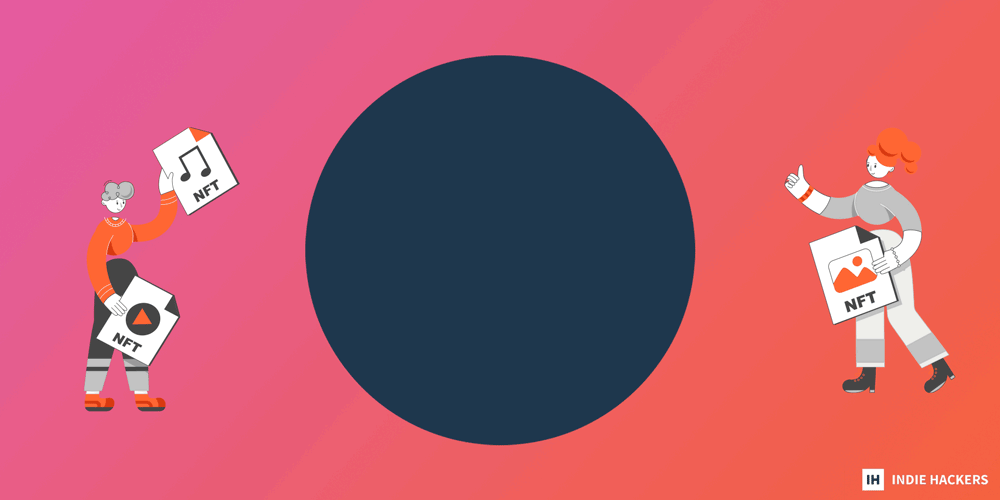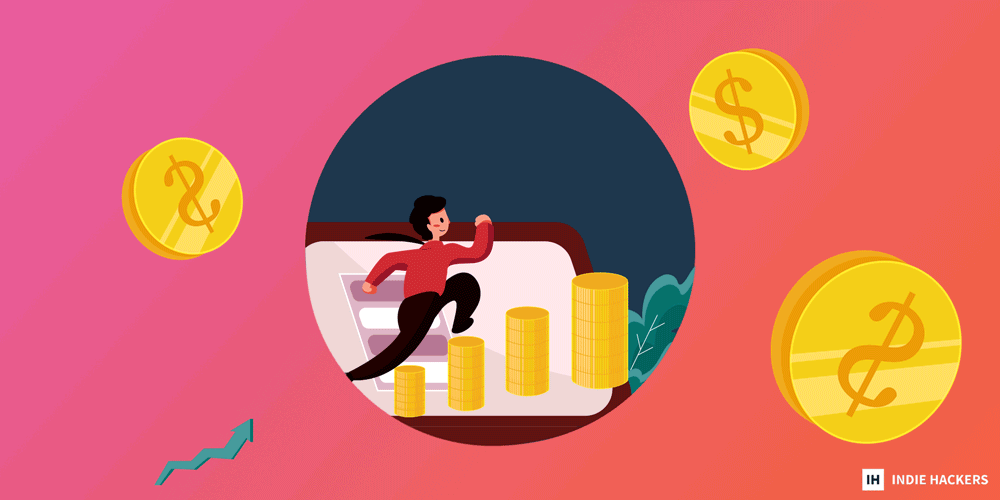Looking to scale, but low on funds? - **Try these 5 growth hacking principles to scale, no money required.** Hint: Strategic partnerships go a long way. - **Independent artists have few ways to monetize. Music NFTs help** artists create without compr
Looking to scale, but low on funds?
-
Try these 5 growth hacking principles to scale, no money required. Hint: Strategic partnerships go a long way.
-
Independent artists have few ways to monetize. Music NFTs help artists create without compromise, with help from superfans. Below, Dru Riley explains how to get in the groove.
-
David Brantley hit nearly $10,000 in monthly revenue with his subscription box business. Here's how he leveraged the power of small businesses and those who support them.
Want to share something with nearly 95,000 indie hackers? Submit a section for us to include in a future newsletter. —Channing
📈 Growth Hacking With No Money

by Denis Shatalin
I never had money to scale my startups, but necessity is the mother of invention! I learned five major principles for growth hacking startups with zero money, and I'm sharing them below.
Growth hacking with little money
1. Spend 10% of your time on high-risk, high-reward activities. Ask: Which action requires the least input, and will bring me the highest output?
Go through your to-do list. 10% of your to-do list should be activities that take 10 minutes of your time, and boost your product's growth by 10x. Invest the other 90% into things that move your startup forward (building and selling).
2. Look for strategic partners. Newsletters, communities, influencers...what channels already reach your ideal audience?
Say you're building a Twitter analytics tool, and there's this guy with 60K followers writing about how to grow on Twitter. This is your strategic partnership opportunity. Don't be pushy. Build a relationship. Ideally, you want potential partners to want to work with you.
Start by writing valuable tweets to get into their attention zone. One day, they may see what you're working on, and may even DM you first. It happened to me.
As you build your relationship, make it obvious how much they would benefit from a partnership. Imagine running five affiliates with 30K potential users in each. You could give them 50% for each paying user they bring in, or you could give them equity. Both work.
3. Do less, achieve more. Implement this thought ritual into your weekly routine. This is growth hacking in its essence.
As soon as you start making money, outsource activities to virtual assistants and freelancers. Time is your most precious asset, especially when the goal is to go big, fast.
Remember one thing when hiring: The more you save, the more you lose. You don't want to spend days explaining how to do something to a rookie. You don't have time for that.
4. Think "times 10." Want to hit 100 more users by June? Plan your workflow so that you hit 1K. But make sure that you're only planning for activities under your control. You can't make people reply, but you can learn to write better.
What should you do every day? How should you structure your day? What should you stop doing? How should you rest?
5. Boost referrals. When each new customer brings in two more customers in the first 30 days, you triple your revenue every month. ClickFunnels got it right, and scaled from $14M to $100M in four years.
The basic way to grow referrals is to pay users for it. But you don't have to be basic.
Many banks do monetary rewards, but it may be the wrong vibe for your startup. Think about cool extras that you can give to users who bring in new users.
I made two friends download Call of Duty Warzone just to unlock one sniper rifle. Both of them bought downloadable content that same week.
You can check out more in my full video here!
Will you implement any of these strategies? Share your thoughts below!
Discuss this story.
📰 In the News

from the Volv newsletter by Priyanka Vazirani
🧐 Why Tinder's background check is a major backfire.
💰 Germany has become a tax haven for crypto investors.
🙅♀️ This US city has made it illegal to have roommates.
💨 Indoor air quality has become a new wellness fixation.
📱 TikTok is under fire for allowing a "strip club full of 15-year-olds."
Check out Volv for more 9-second news digests.
🎼 Trend Alert: Music NFTs

from the Trends.vc newsletter by Dru Riley
Why it matters
You can align yourself with the success of your favorite artists.
Problem
Independent artists have few ways to monetize:
- Streams pay roughly $0.004 each, an immaterial amount unless you're a large artist.
- Live performances take time, relatively large fan bases, planning, and coordination.
- Music licensing deals (i.e. movies, tv shows, video games) are few and far between.
- Merch sales depend on building high-affinity relationships with lots of fans.
- Brand deals may be limited to well-known artists.
Solution
Music NFTs help artists create without compromise, with help from superfans.
Latasha sold "GoGo Wyne" for 13.4207 ETH (~$41K) to Jesse Grushack.
This is equivalent to 10M+ streams.
Players
Music NFTs:
Music NFT platforms:
-
Foundation: Web3 Platform for creators and collectors.
-
Audius: Music streaming service.
-
Zora: Protocol to buy, sell, and curate NFTs.
-
Catalog: Digital record shop.
-
Mint Songs: Music NFT marketplace.
Music NFT communities:
Predictions
Opportunities
Risks
- Legal issues: Platforms make onboarding faster and easier. Be careful to avoid legal hiccups.
- Choosing chains: There are tradeoffs to consider when choosing which chain to use. What's more important to you, security or transaction costs?
Key lessons
- Fans will support artists, regardless of the model. Nipsey Hussle sold 1K copies of Crenshaw for $100 in one night.
- Artists must understand the business and creation process of music to retain artistic freedom.
- NFTs do not prevent others from enjoying art. The more they enjoy it, the more valuable ownership becomes. This resembles a patronage model.
Hot takes
- Fans will use music NFTs as proof of discovery. It's a symbol to show how early they were to the party, and how much they've supported their favorite artists.
- Unofficial fan clubs will emerge around music NFTs. Owners will use tools like Guild to meet others who have skin in the game. See Tesla car clubs.
Haters
"I can listen to music without buying NFTs."
Sure. But if you want more, music NFTs offer unique experiences. Fans can enjoy direct relationships with artists, early access to future drops, and access to communities with other true fans.
"NFTs mean more hassle for musicians."
Managing your career as an independent artist means more hassle and ownership. There's no free lunch. Commitment to continued growth is a prerequisite for creative freedom.
"I don't understand the value of music NFTs. Do they give me royalties?"
There are patronage models and ownership models. Platforms like Royal focus on royalties. Music NFTs may prove to be more valuable collectibles than financial instruments.
Links
Related reports
More reports
Go here to get the Trends Pro report. It contains 200% more insights. You also get access to the entire back catalog and the next 52 Pro Reports.
Subscribe to Trends.vc for more.
👥 10M Users, Zero Funding

by Aytekin Tank
Leadership:
You can be a good presenter even if you’re shy.
You don’t have to be an extroverted salesperson to give good speeches. Clarify your thoughts, prepare what you want to say, and use notes instead of reading or memorizing. Every talk will help you improve, and all that practice adds up over time. If you feel a little jittery, remember that the point is to connect with people, not to impress them.
Discuss this story.
📦 David Brantley's $10K MRR Subscription Box Business

by David Brantley
Hi indie hackers! I'm by David Brantley, and my cofounder and I were trying to launch a loyalty app focused on helping small business brick-and-mortar shops increase foot traffic. About a month before the official rollout, COVID-19 hit.
We obviously had to pivot the idea, but we kept small businesses at the heart of the plan. With everything closed and people sheltering in place, we decided to launch a subscription box with small business goods to send out to folks who wanted to support unique products, and the small businesses that make them. Here's what happened next!
Launch luck
We went from new idea to launch in less than a week. We decided to turn the business into a monthly subscription box featuring products from small businesses. A few key things enabled us to move that fast:
- We already had relationships with small business owners, which is a hard thing to build at scale. For new small business partners, we went through Faire.
- We used Shopify and a few plugins to get the site up and running.
- Friends and family were the first few customers.
Our business model was simple: Source goods at wholesale prices from small businesses, pack a box with 4-6 different products, and send them out to customers. With this, we had to price relatively high: $40-$60 per box. Even at this price, we were running at 1-3% margins because of packaging and shipping.
After about eight months, we were able to grow to almost $10K MRR, but our margins remained the same. We were both full-time college students, and I was also interning for Volvo while running this. A positive aspect was that, aside from sourcing goods and packing boxes to send, the time we needed to devote to the business was relatively low. We ran a simple referral program to get new customers, and had the small businesses that were featured in the box to promote us on their individual social media channels. Our growth continued.
Phasing out
Three things ultimately caused us to phase the business out:
- Space constraints: Sourcing, packing, and shipping $10K worth of small business goods required more than my college apartment living room, and we didn’t have enough capital to get a bigger space.
- Our margins were too small to make significant improvements or investments in areas that we knew we needed to address.
- Neither of us had an actual passion for the physical goods space, but we both recognized that the timing, our abilities, and the potential impact all aligned at the start of the COVID-19 pandemic, so we dove in anyway.
Advice for indie hackers
All in all, we learned a ton. Small business owners are hard to sell to unless you’re able to directly tie why or how your business helps them move product. Ship as fast as you can. Your first few customers likely already know that the product isn’t at its best, but they believe in the idea and the potential.
Most importantly, I can’t stress enough the importance of having fun and liking the project or business that you’re building. That sounds cliché, but nothing will ever get your all if you don’t enjoy it. This is something that's important to recognize early.
Discuss this story.
🐦 The Tweetmaster's Pick

by Tweetmaster Flex
I post the tweets indie hackers share the most. Here's today's pick:

🏁 Enjoy This Newsletter?
Forward it to a friend, and let them know they can subscribe here.
Also, you can submit a section for us to include in a future newsletter.
Special thanks to Jay Avery for editing this issue, to Gabriella Federico for the illustrations, and Denis Shatalinrch, Priyanka Vazirani, Dru Riley, Aytekin Tank, and David Brantley for contributing posts. —Channing






